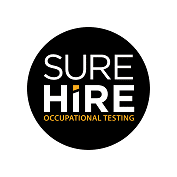TAKEAWAY: The transportation industry is one of several high-risk sectors for noise-induced hearing loss (NIHL). This article is the fourth in a five-part series about NIHL in high-risk industries. Read on to learn about the significant risks for NIHL in the transportation industry and the steps employers can take to reduce these risks and keep workers safe.
Jump Ahead
- Noise risks in the transportation industry
- How transportation industry employers can minimize the risk of NIHL in the workplace
- Understand noise exposure limits
- Invest in noise-reducing vehicles and machinery
- Adjust workplace policies and procedures
- Hearing protection in the transportation industry
- Regular audiometric testing
- NIHL in the transportation industry | In conclusion
- You May Also Be Interested In…
The transportation industry is one of several high-risk sectors for noise-induced hearing loss (NIHL). Workers in the oil and gas and mining industries are also at high risk for developing NIHL. Although NIHL is a widespread problem, it’s preventable, and employers can take several steps to mitigate the risks.
NIHL occurs when a person is exposed to a sound that’s loud enough to cause hearing damage. It can also happen gradually after ongoing exposure to loud sounds. Noise is present in and out of a work setting, with the latter referred to as occupational noise-induced hearing loss (ONIHL). ONIHL is a more significant problem due to the NIHL risks workers face in specific industries.
This article is the fourth in a five-part series about NIHL in high-risk industries. Read on to learn about the significant risks for NIHL in the transportation industry and the steps employers can take to reduce these risks and keep workers safe.
Noise risks in the transportation industry
Noise in the transportation industry comes from several sources. Cranes, trucks, trains, planes, ships, and heavy machinery all generate noise at levels with the potential to damage hearing.
Workers in the transportation industry who live in a city are exposed to additional transportation noise, further increasing the risk for NIHL. They may be subject to high transportation noise levels in and out of the workplace.
The transportation industry often finds itself in the spotlight for its detriment to the environment and its impact on global warming. However, it’s crucial not to overlook the noise risks in this sector. Transportation noise can disrupt sleep and increase stress levels, increasing disease risk. It also puts workers at risk of developing NIHL.
A report from the Centers for Disease Control and Prevention (CDC) highlighted that almost eight percent of Transportation, warehousing, and utility workers had some degree of hearing impairment. These figures are lower than the percentages for workers in other high-risk industries such as manufacturing, construction, mining, oil and gas, and agriculture.
However, the risks should not be ignored and can still be considered significant. Studies have identified repair, maintenance, and motor vehicle operation as high-risk occupations, all of which are part of the transportation sector.
How transportation industry employers can minimize the risk of NIHL in the workplace
NIHL is permanent and irreversible, so employers must reduce the risks and protect their workers. Transportation industry employers can take steps to accommodate deaf and hard-of-hearing employees, and they should take a proactive approach to reduce NIHL risks and avoid noise-induced hearing problems from the outset. The following action points can help employers prevent ONIHL and prevent further damage to employees who already have signs of ONIHL.
Understand noise exposure limits
Employers should stay current with regional and federal laws for noise exposure and industry regulations. In most jurisdictions, 85 decibels (dBA) is the allowable noise level over an 8-hour workday.
At higher levels, employers must understand how to reduce exposure time and keep workers within safe limits. For example, 3 hours of exposure over a day is acceptable for 97dB(A), and 30 minutes is the limit for a noise level of 110dB(A).
It’s also crucial to recognize that some workers may be more sensitive to noise than others, and some might be exposed to higher noise levels outside the workplace than others. Therefore, a conservative approach to noise-exposure levels offers the best strategy for protecting workers.
Invest in noise-reducing vehicles and machinery
Modern machinery and equipment often have noise-reducing features. Employers can invest in new, quieter equipment or modify older equipment to reduce noise levels. Examples include:
- Noise-reducing components, such as quieter tires, landing gears, and brake blocks.
- Improve infrastructures, such as quieter train tracks and road surfaces.
- Invest in newer vehicles with quieter engines
- Install a noise-absorbant sound barrier wall around truck terminals to reduce noise levels.
Adjust workplace policies and procedures
Employers can take the following steps to change operations procedures and positively impact workplace noise levels.
- Reduce transport volumes. Explore ways to have fewer noisy vehicles in one area at any given time.
- Determine ways to adjust transportation schedules to reduce nighttime vehicle noise, which can disrupt sleep patterns.
- Set speed restrictions for road vehicles to decrease noise levels.
- Establish restrictions or ban access to certain areas for heavy trucks.
- Redesign the work area to create quiet spaces.
Hearing protection in the transportation industry
The transportation industry is an interesting one when it comes to hearing protection. While solutions such as earmuffs or custom-moulded earplugs are an obvious solution for employers in several high-risk sectors, there’s a delicate balance between hearing protection and optimal communication in transportation.
Several innovative solutions are emerging to combat this problem, each specific to the challenges and operations within a given sector. For example, shipping and rail industry employers can invest in digital hearing protection designed to reduce noise while enhancing speech. Or they can select technology that integrates with existing communication devices.
Regular audiometric testing
Audiometric testing is an effective way to detect hearing loss. Hearing tests assess a person’s ability to hear sounds at various intensities and pitches.
A sometimes-mandatory tool, audiometric testing offers vital insights that help employers make the best decisions around protecting workers’ hearing. Baseline and periodic tests are recommended, and mobile-testing services provide a convenient, time-effective testing approach.
NIHL in the transportation industry | In conclusion
NIHL risks may not be as high for transportation industry employees as in other high-risk sectors. However, the risk is still significant, and employers should treat NIHL as a critical issue, mainly because it’s preventable. When ignored, the negative repercussions can be widespread individually and company-wide.
Some steps transportation industry employers can take to protect workers from ONIHL include investing in quieter vehicles and machinery, modifying equipment with noise-reducing features, changing workplace procedures, and arranging regular hearing tests for employees.
[Learn more in “How to Prevent Occupational Hearing Loss”].Transportation industry employers may also be interested to read about the impact of occupational testing on North American health and safety culture in this sector and how to prevent musculoskeletal injuries in the transportation industry.

Book Audiometric Testing for your Workforce Today!
With over 6,500 locations across North America, SureHire can support your testing needs. Contact us to speak with a member of our team and request a quote today!
You May Also Be Interested In…
- Do You Have Reasonable Suspicion?
 Employers cannot initiate reasonable suspicion testing without first going through the 5-step process. Reasonable suspicion training provides critical information about how to initiate reasonable suspicion testing, including the 5-step process and other tools that employers can use to help manage the misuse of alcohol and drugs in the workplace.
Employers cannot initiate reasonable suspicion testing without first going through the 5-step process. Reasonable suspicion training provides critical information about how to initiate reasonable suspicion testing, including the 5-step process and other tools that employers can use to help manage the misuse of alcohol and drugs in the workplace. - An Employer’s Guide: What You and Your Employees Need to Know About DOT Drug & Alcohol Testing
 When implementing or maintaining DOT Drug & Alcohol testing, there are key areas that employers should consider.
When implementing or maintaining DOT Drug & Alcohol testing, there are key areas that employers should consider. - SureHire Occupational Testing Acquires COHR Health: A Positive Step Towards Safe, Healthy, Productive Workforces and Communities
 We are thrilled to announce that today, May 6, 2024, SureHire Occupational Testing has officially acquired COHR Health, a well-known leader in occupational health services. Read on…
We are thrilled to announce that today, May 6, 2024, SureHire Occupational Testing has officially acquired COHR Health, a well-known leader in occupational health services. Read on… - Occupational Testing Use Case – Mining
 In this case study, we will explore how mining companies can use various types of occupational tests to reduce Total Recordable Incident Rates (TRIR) long term.
In this case study, we will explore how mining companies can use various types of occupational tests to reduce Total Recordable Incident Rates (TRIR) long term. - 9 Strategies to Keep Workers Cool on Drilling Sites During Hot Summer Months
 This article delves into strategies to keep workers cool and safe on drilling sites during the hot summer months.
This article delves into strategies to keep workers cool and safe on drilling sites during the hot summer months. - Hearing Conservation Basics: How to Manage Occupational Noise
 Learn how to proactively mitigate occupational noise risks and help prevent NIHL among workers.
Learn how to proactively mitigate occupational noise risks and help prevent NIHL among workers.

